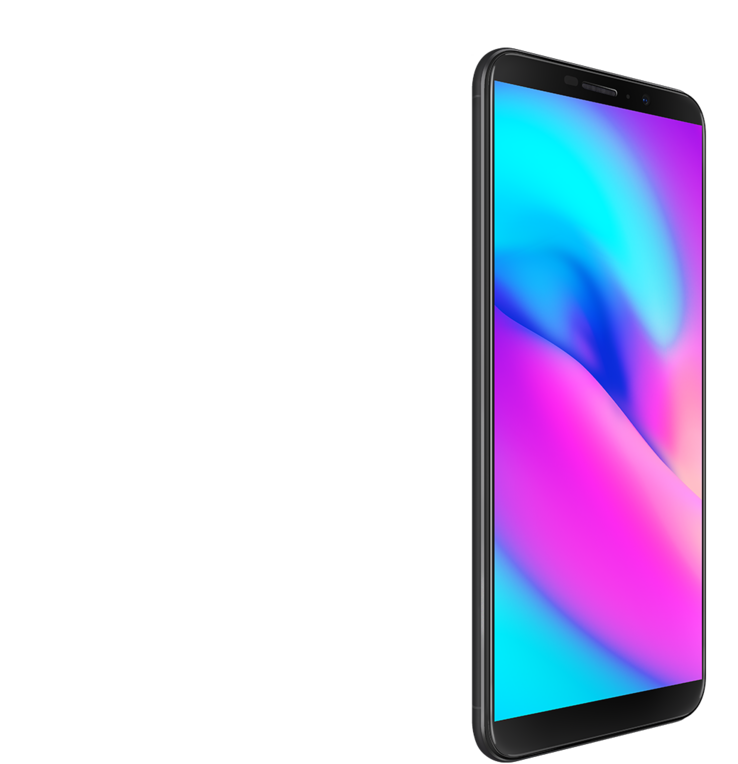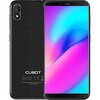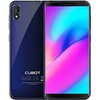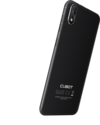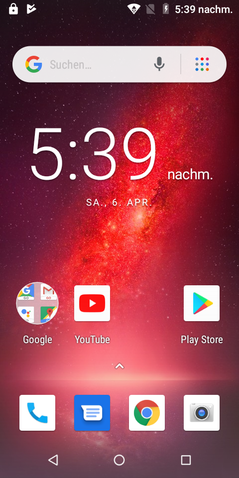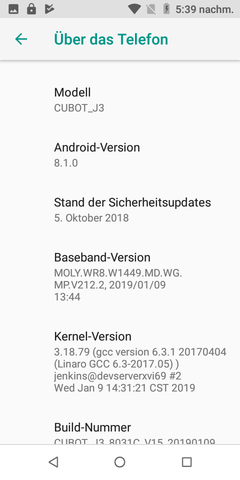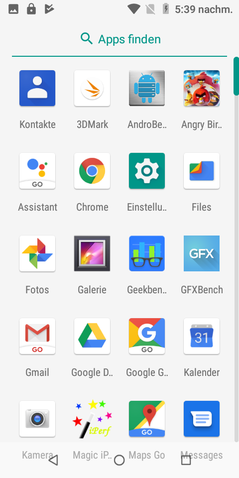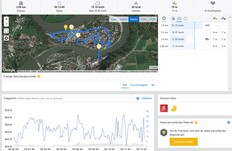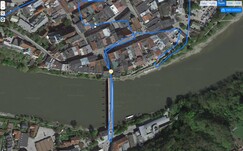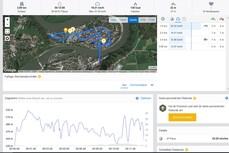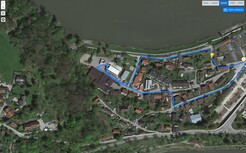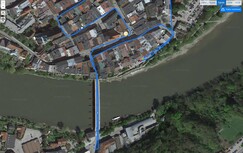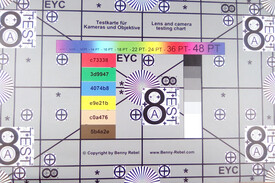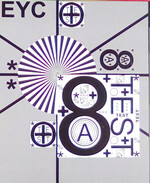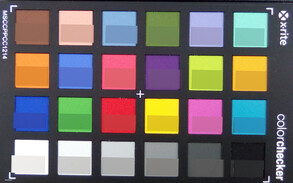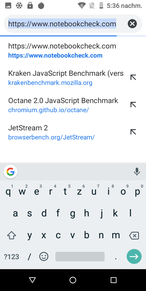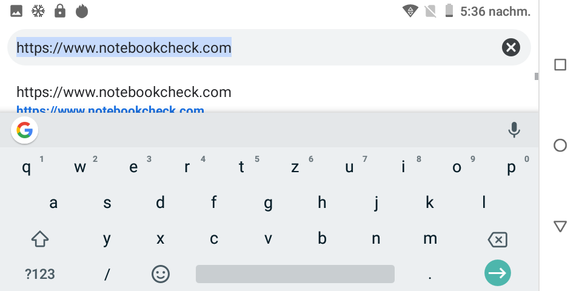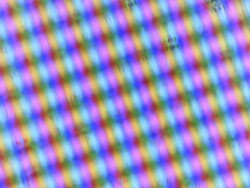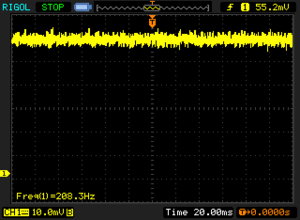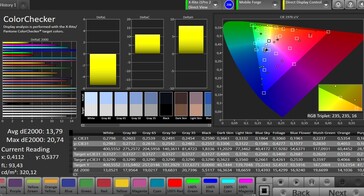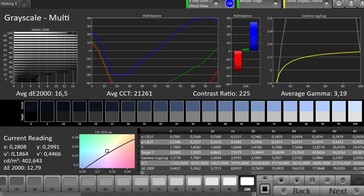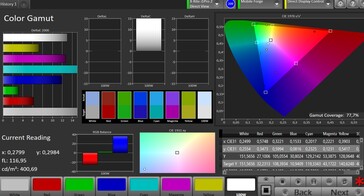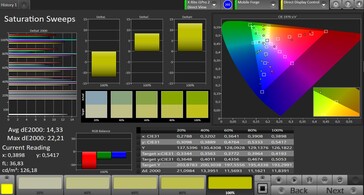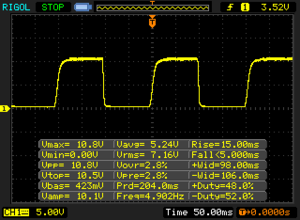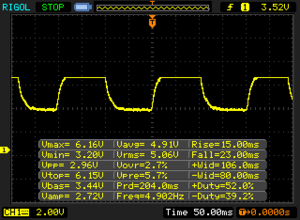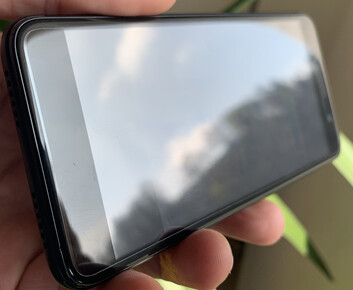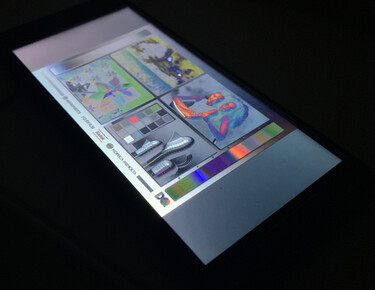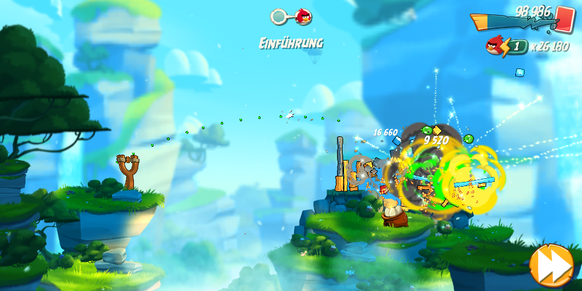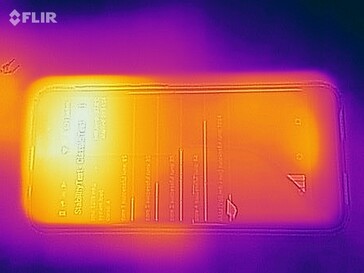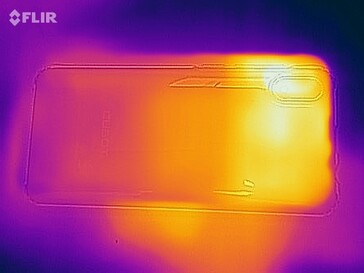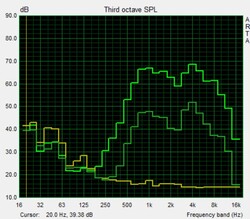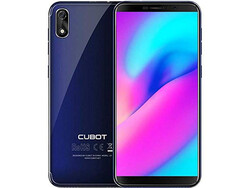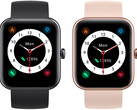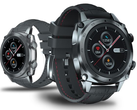Cubot J3 Smartphone Review
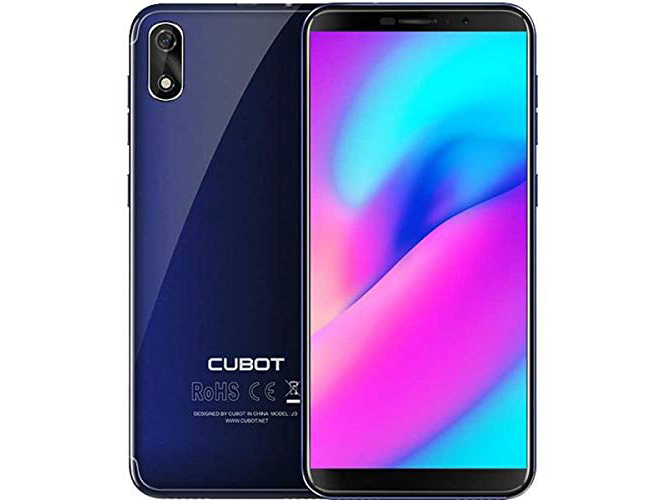
The Cubot J3 retails for just under €70 (~$79), which is comparatively affordable for a smartphone in 2019, but prices have already dropped further online if you are eager for a bargain. We should set out now that smartphones at this price rarely impress, although there are exceptions such as the Xiaomi Redmi Go.
The J3 has a few things going for it such as its small form factor, its replaceable battery and Android GO. It has an acceptable amount of RAM and internal storage too. However, you must make do with a TN display that has poor viewing angles and a rather small battery.
We have decided to compare the J3 against other sub-€100 (~$112) budget smartphones. Our comparison devices will include the Nokia 1, Wiko Jerry3 and Xiaomi Redmi Go.
Case
The J3 has a removable plastic back that comes in black or blue. The back looks rather boring and is broken up by the camera housing, the Cubot logo and some regulatory information. The plastic has a matte texture to it though, which makes it impervious to fingerprints.
Our review unit is cheaply made too, as we can deform the display by applying pressure to it. The case also creaks quietly when we try to twist it. The J3 has a smaller footprint than all but the Nokia 1 of our comparison devices, but it is rather hefty for its size at 148 g (~5.2 oz). By contrast, the Nokia 1 and Redmi Go weigh 131 g (~4.6 oz) and 137 g (~4.8 oz) respectively, despite the latter being a few millimetres wider than our review unit.
Connectivity
Not all smartphones at this price have 16 GB of internal storage, with even the otherwise well-equipped Redmi Go falling short, so Cubot has done well here. The J3 has 1 GB of RAM too, but this is the standard for entry-level devices, although it is not enough to run many complex apps.
The J3 also supports up to 64 GB microSD cards should you run out of internal storage. Cubot has included a dedicated microSD card slot, which is good as it means that there is no need to compromise between microSD card expansion and using a second SIM. Unfortunately, this compromise happens all too often with OEMs that insist on equipping their devices with hybrid second SIM card slots. Please keep in mind that Cubot hides the microSD card reader behind the J3’s battery, which means that you must reboot the device to switch microSD cards. This is only a minor inconvenience, but it is one, nonetheless.
The J3 also has two dedicated SIM slots for dual-SIM functionality. It also features the classic combination of a micro USB port and a 3.5 mm headphone jack.
Software
Originally Cubot shipped the J3 with Android 7 Nougat, but the device has since been updated to Android 8.1 Go. Our review unit has security patches from October 2018 installed, which were around 6 months old at the time of testing.
Android Go is a stripped back version of stock Android that Google has designed to run on entry-level smartphones. Android Go takes up to half the storage that stock Android does, which Google has achieved by replacing its standard preinstalled apps with web wrappers. Google Maps, for example, is just a link to the service running on Chrome.
Communication & GPS
The J3 does not have LTE, so you must make do with 3G, which is surprising even for an entry-level device. Moreover, our review unit has mediocre network reception when being used inside buildings in a built-up area. The reception improves outdoors though.
The J3 supports up to IEEE 802.11 n Wi-Fi, which is common for budget devices. Our review unit achieved around 53 MBit/s in our Wi-Fi tests, which puts it on par with the Nokia 1 and Redmi Go of our comparison devices. You may notice some speed limitations if you are connected to a fast Wi-Fi network, but around 50 MBit/s will feel fast in daily use.
| Networking | |
| iperf3 transmit AX12 | |
| Xiaomi Redmi Go | |
| Cubot J3 | |
| Nokia 1 | |
| Wiko Jerry 3 | |
| iperf3 receive AX12 | |
| Xiaomi Redmi Go | |
| Cubot J3 | |
| Nokia 1 | |
| Wiko Jerry 3 | |
We also took our review unit on a bike ride to test its location accuracy against our trusty Garmin Edge 520. Disappointingly, the J3 hardly ever plotted our route accurately as demonstrated by the screenshots below. In short, we would only recommend using the J3 for an approximate location because it is too inaccurate to provide precise positioning.
Telephone Features & Call Quality
Our review unit has the default Android Go phone app installed. The app works as expected and is just as intuitive as it is on other devices running Android Go that we have tested.
The J3 has acceptable call quality, although it is a bit of a mixed bag. Voices always sounded clear during our tests, but the earpiece does not get terribly loud, which could become a problem if you were calling from a noisy environment.
Our call partner could also hear us well when we used the earpiece. However, the microphone struggled to filter out background noise when we switched to speakerphone, which limits the utility of using handsfree. We could hear our call partner fine, but you may find yourself being asked to change to using the earpiece if you start a call on handsfree.
Cameras
The J3 has an 8 MP rear-facing camera that, perhaps unsurprisingly, takes woeful looking photos. Our test pictures are grainy and have a blue tint to them, while details are often washed out. Dark areas look pixelated too, which is particularly noticeable in low-light photos as in scene 3.
The main camera also takes a while to adapt to changing lighting conditions when shooting videos, which makes the results look jarring. The dynamic range leaves something to be desired too, but the picture quality of videos is otherwise passable. The J3 can only record videos in up to 720p at 30 FPS too.
The J3 also has a 5 MP front-facing camera, which takes just as grainy and washed out photos as the rear-facing sensor does. Additionally, the front-facing sensor typically overexposes scenes, which makes bright areas look blown out.
The rear-facing camera cannot convince even under controlled lighting conditions as demonstrated by the pictures below. Our review unit overexposes our test chart to the point where bright areas look overblown. Moreover, fine lines and structures such as the pinwheel have a blue tint to them, and the contrast drops off noticeably towards the edges of the chart. The rear-facing sensor oversaturates colours too compared to the ColorChecker Passport reference colour. In short, the rear-facing camera is a mess and is only good enough for occasional snapshots.
Accessories & Warranty
Cubot includes a charger and a USB cable in the box along with a silicone case. The case is good for protecting the J3 from drops and scrapes, although we found it difficult to remove without removing the back case too.
The J3 should come with a 1 year manufacturer’s warranty, but the terms of which are unclear. Cubot’s website is written in pidgin English, which makes it improbable to decipher any exclusions that may apply. At any rate, the company states that you would need to send the device to China for a warranty repair, the cost of which may be more expensive than the device itself.
Hence, we would recommend purchasing the J3 from a reputable third-party retailer instead, which should give you more robust warranty coverage that you could rely on. Please see our Guarantees, Return Policies & Warranties FAQ for country-specific information.
Input Devices & Operation
Our review unit came with a pre-applied plastic screen protector, which has a resistive finish that makes performing simple gestures such as swiping difficult. Unfortunately, the touchscreen is inaccurate even with the screen protector removed, especially towards the edges of the display. We often found ourselves having to press the screen hard before the touchscreen would recognise our input. Also, the display is so poorly calibrated that we regularly struggled to type the letter "p" with the default keyboard.
The J3 comes with Google Gboard pre-installed as the default keyboard. The app works as well as it could do considering the touchscreen issues that plague our review unit. This is the fault of our review unit though, and not the app.
Display
A low-resolution display that also has poor viewing angles? Welcome to the cheapest of all smartphone price ranges. Few manufacturers still equip their budget smartphones with TN panels because IPS panels are superior in almost every way, but Cubot does.
The J3 has a 5-inch display that runs natively at 960x480, which is on par with all but the Redmi Go of our comparison devices. However, our review unit has a noticeably brighter display and achieved an average maximum brightness of 401 cd/m² according to X-Rite i1Pro 2, which is between 8% and 37% brighter than our comparison devices. The display is comparatively evenly lit too.
| |||||||||||||||||||||||||
Brightness Distribution: 92 %
Center on Battery: 400 cd/m²
Contrast: 235:1 (Black: 1.7 cd/m²)
ΔE ColorChecker Calman: 13.79 | ∀{0.5-29.43 Ø4.78}
ΔE Greyscale Calman: 16.5 | ∀{0.09-98 Ø5}
77.7% sRGB (Calman 2D)
Gamma: 3.19
CCT: 21261 K
| Cubot J3 TN LED, 960x480, 5" | Xiaomi Redmi Go IPS, 1280x720, 5" | Wiko Jerry 3 IPS, 960x480, 5.5" | Nokia 1 IPS, 854x480, 4.5" | |
|---|---|---|---|---|
| Screen | 78% | 57% | 125% | |
| Brightness middle (cd/m²) | 400 | 340 -15% | 370 -7% | 256 -36% |
| Brightness (cd/m²) | 401 | 309 -23% | 367 -8% | 251 -37% |
| Brightness Distribution (%) | 92 | 77 -16% | 90 -2% | 89 -3% |
| Black Level * (cd/m²) | 1.7 | 0.28 84% | 0.4 76% | 0.12 93% |
| Contrast (:1) | 235 | 1214 417% | 925 294% | 2133 808% |
| Colorchecker dE 2000 * | 13.79 | 5.53 60% | 8.58 38% | 4.82 65% |
| Colorchecker dE 2000 max. * | 20.74 | 9.87 52% | 16.5 20% | 11.75 43% |
| Greyscale dE 2000 * | 16.5 | 6.4 61% | 9.3 44% | 5.2 68% |
| Gamma | 3.19 69% | 2.275 97% | 2.083 106% | 2.3 96% |
| CCT | 21261 31% | 8198 79% | 9315 70% | 7107 91% |
* ... smaller is better
Screen Flickering / PWM (Pulse-Width Modulation)
| Screen flickering / PWM detected | 208 Hz | ||
The display backlight flickers at 208 Hz (worst case, e.g., utilizing PWM) . The frequency of 208 Hz is relatively low, so sensitive users will likely notice flickering and experience eyestrain at the stated brightness setting and below. In comparison: 53 % of all tested devices do not use PWM to dim the display. If PWM was detected, an average of 8101 (minimum: 5 - maximum: 343500) Hz was measured. | |||
The TN starts to show its weaknesses when we look at colour accuracy. Our review unit has a 1.7 cd/m² black value, which is strikingly higher than our comparison devices. The comparatively high black value results in an abysmal 235:1 contrast ratio. The Jerry3, Nokia 1 and Redmi Go all have vastly superior contrast ratios, which will make colours look more vivid than they do on the J3.
Moreover, we noticed considerable colour shifts throughout our tests, which further analysis with a spectrophotometer and CalMAN software reinforced. They also determined that the display has a strong blue tint, which strongly distorts colours.
Display Response Times
| ↔ Response Time Black to White | ||
|---|---|---|
| 20 ms ... rise ↗ and fall ↘ combined | ↗ 15 ms rise | |
| ↘ 5 ms fall | ||
| The screen shows good response rates in our tests, but may be too slow for competitive gamers. In comparison, all tested devices range from 0.1 (minimum) to 240 (maximum) ms. » 42 % of all devices are better. This means that the measured response time is similar to the average of all tested devices (20.2 ms). | ||
| ↔ Response Time 50% Grey to 80% Grey | ||
| 38 ms ... rise ↗ and fall ↘ combined | ↗ 15 ms rise | |
| ↘ 23 ms fall | ||
| The screen shows slow response rates in our tests and will be unsatisfactory for gamers. In comparison, all tested devices range from 0.165 (minimum) to 636 (maximum) ms. » 54 % of all devices are better. This means that the measured response time is worse than the average of all tested devices (31.6 ms). | ||
The J3 is also difficult to use outdoors because of its low maximum brightness and weak contrast ratio. The screen is completely unreadable under direct sunlight as our photo below demonstrates. In short, we would recommend finding a shady spot where possible, if you find yourself using the J3 outside on a sunny day.
Our review unit also has poor viewing angles because of its TN-LED panel. We noticed strong colour shifts during our tests, which make the display practically unreadable unless you are looking at the device square on. Even then, you may notice some colour distortions if you tilt the device slightly.
Performance
Cubot equips the J3 with a MediaTek MT6580M SoC, which is one of the slowest SoCs currently being used in smartphones today. You can also find it in the Jerry3, so it should come as no surprise that the J3 performs on par with the Jerry3 in synthetic benchmarks. The Redmi Go outshines both devices with its Qualcomm Snapdragon 425 SoC as our benchmark tables below show.
We also experienced considerably more stutters and lags with the J3 than we did with the Redmi Go. Apps frequently crash on the former too, despite them both having 1 GB of RAM. Overall, the J3 does not offer smooth system performance, while the MediaTek MT6580M feels underpowered even for Android Go.
| PCMark for Android - Work performance score (sort by value) | |
| Cubot J3 | |
| Xiaomi Redmi Go | |
| Wiko Jerry 3 | |
| Nokia 1 | |
| Average Mediatek MT6580M (2516 - 3041, n=12) | |
| 3DMark | |
| 1280x720 offscreen Ice Storm Unlimited Score (sort by value) | |
| Cubot J3 | |
| Xiaomi Redmi Go | |
| Wiko Jerry 3 | |
| Average Mediatek MT6580M (2841 - 2946, n=12) | |
| 1280x720 offscreen Ice Storm Unlimited Graphics Score (sort by value) | |
| Cubot J3 | |
| Xiaomi Redmi Go | |
| Wiko Jerry 3 | |
| Average Mediatek MT6580M (2396 - 2485, n=12) | |
| 1280x720 offscreen Ice Storm Unlimited Physics (sort by value) | |
| Cubot J3 | |
| Xiaomi Redmi Go | |
| Wiko Jerry 3 | |
| Average Mediatek MT6580M (7498 - 8913, n=12) | |
| GFXBench (DX / GLBenchmark) 2.7 | |
| T-Rex Onscreen (sort by value) | |
| Cubot J3 | |
| Xiaomi Redmi Go | |
| Wiko Jerry 3 | |
| Nokia 1 | |
| Average Mediatek MT6580M (4.4 - 12, n=12) | |
| Average of class Smartphone (12 - 166, n=155, last 2 years) | |
| 1920x1080 T-Rex Offscreen (sort by value) | |
| Cubot J3 | |
| Xiaomi Redmi Go | |
| Wiko Jerry 3 | |
| Nokia 1 | |
| Average Mediatek MT6580M (4.1 - 11, n=12) | |
| Average of class Smartphone (22 - 954, n=155, last 2 years) | |
There are also problems with browser benchmarks. We would usually run five benchmarks, but only Mozilla Kraken would run without crashing before the end. Unsurprisingly, our review unit and the Jerry3 achieved comparable results, which fell well short of the Redmi Go.
Additionally, complex websites take a while to load despite the decent Wi-Fi performance. You will be waiting a while for media content to appear too.
| Mozilla Kraken 1.1 - Total | |
| Wiko Jerry 3 (Chrome 67) | |
| Cubot J3 (Chrome 73) | |
| Nokia 1 (Chrome 66) | |
| Average Mediatek MT6580M (14579 - 21257, n=11) | |
| Xiaomi Redmi Go (Chrome 72) | |
| Average of class Smartphone (257 - 28190, n=154, last 2 years) | |
* ... smaller is better
It is bad news for the J3 and its transfer speeds too. Cubot has equipped the device with slow storage even by eMMC standards, which our AndroBench table below demonstrates. The J3 finished rock bottom in all but one of the tests, which reinforces our impression that apps open comparatively slowly.
Worse still, our review unit would not recognise our Toshiba Exceria Pro M501 reference microSD card, with which we usually test microSD card readers. The device could read a slower Kingston card though, and correspondingly achieved poor transfer speeds here too.
| Cubot J3 | Xiaomi Redmi Go | Wiko Jerry 3 | Nokia 1 | Average 16 GB eMMC Flash | Average of class Smartphone | |
|---|---|---|---|---|---|---|
| AndroBench 3-5 | 340% | 88% | 132% | 193% | 6201% | |
| Sequential Read 256KB (MB/s) | 130.6 | 289.3 122% | 117.1 -10% | 208.3 59% | 164.5 ? 26% | 2228 ? 1606% |
| Sequential Write 256KB (MB/s) | 12.1 | 54.8 353% | 50.8 320% | 51.8 328% | 43 ? 255% | 1852 ? 15206% |
| Random Read 4KB (MB/s) | 14.6 | 45.4 211% | 24.18 66% | 25.7 76% | 21.7 ? 49% | 296 ? 1927% |
| Random Write 4KB (MB/s) | 5.5 | 11.9 116% | 11.23 104% | 9.1 65% | 8.08 ? 47% | 339 ? 6064% |
| Sequential Read 256KB SDCard (MB/s) | 8.1 ? | 84.2 ? 940% | 16 ? 98% | 59.1 ? 630% | ||
| Sequential Write 256KB SDCard (MB/s) | 15.9 ? | 63.4 ? 299% | 7.4 ? -53% | 39.8 ? 150% |
Games
The MediaTek MT6580M integrates an ARM Mali-400 MP2 GPU, which can run games such as "Angry Birds 2" and "Temple Run 2" smoothly. The former takes a while to load, but that is our only real complaint here. The J3 should handle most older games but we would avoid anything too complex.
The accelerometer and touchscreen mostly worked well during our gaming tests too. We hardly noticed the touchscreen inaccuracies while playing "Temple Run 2", which is positive.
Emissions
Temperature
The J3 manages its surface temperatures poorly too. The top of our review unit reached a maximum of 34.9 °C (~95 °F) at idle, which is as hot as some smartphones get under sustained load. Likewise, surface temperatures rise to 40.2 °C (~104 °F) under sustained load, which will feel hot to the touch. Overall, surface temperatures are not awful, but the J3 gets hotter than many of its competitors.
(±) The maximum temperature on the upper side is 40.2 °C / 104 F, compared to the average of 35.2 °C / 95 F, ranging from 21.9 to 247 °C for the class Smartphone.
(+) The bottom heats up to a maximum of 39 °C / 102 F, compared to the average of 34 °C / 93 F
(+) In idle usage, the average temperature for the upper side is 30.8 °C / 87 F, compared to the device average of 32.9 °C / 91 F.
Speakers
The J3 has a mono speaker on the underside of its frame, which produces thin and high-pitched audio. The speaker also only gets moderately loud, but it is about as good as other speakers at this price range.
We had no issues with listening to audio via the headphone or Bluetooth though. Both outputs reproduced audio cleanly throughout our tests.
Cubot J3 audio analysis
(±) | speaker loudness is average but good (76.2 dB)
Bass 100 - 315 Hz
(-) | nearly no bass - on average 32.7% lower than median
(+) | bass is linear (6.5% delta to prev. frequency)
Mids 400 - 2000 Hz
(±) | higher mids - on average 6.9% higher than median
(±) | linearity of mids is average (10.2% delta to prev. frequency)
Highs 2 - 16 kHz
(+) | balanced highs - only 4.3% away from median
(±) | linearity of highs is average (8.8% delta to prev. frequency)
Overall 100 - 16.000 Hz
(-) | overall sound is not linear (32.8% difference to median)
Compared to same class
» 83% of all tested devices in this class were better, 1% similar, 15% worse
» The best had a delta of 11%, average was 35%, worst was 134%
Compared to all devices tested
» 92% of all tested devices were better, 1% similar, 7% worse
» The best had a delta of 4%, average was 24%, worst was 134%
Xiaomi Redmi Go audio analysis
(+) | speakers can play relatively loud (83.7 dB)
Bass 100 - 315 Hz
(-) | nearly no bass - on average 69.3% lower than median
(+) | bass is linear (0% delta to prev. frequency)
Mids 400 - 2000 Hz
(-) | nearly no mids - on average 69.3% lower than median
(+) | mids are linear (0% delta to prev. frequency)
Highs 2 - 16 kHz
(-) | nearly no highs - on average 69.3% lower than median
(+) | highs are linear (0% delta to prev. frequency)
Overall 100 - 16.000 Hz
(-) | overall sound is not linear (128.1% difference to median)
Compared to same class
» 98% of all tested devices in this class were better, 2% similar, 0% worse
» The best had a delta of 11%, average was 35%, worst was 134%
Compared to all devices tested
» 99% of all tested devices were better, 1% similar, 0% worse
» The best had a delta of 4%, average was 24%, worst was 134%
Power Management
Power Consumption
The J3 has surprisingly good power consumption. Our review unit consumes a minimum of 0.7 W and averaged 1.5 W at idle, which puts it slightly ahead of our comparison devices. The device consumes a maximum of 5.6 W under sustained load too, which is decent. Overall, the J3 is slightly more efficient than most MediaTek MT6580M powered devices that we have tested and all but the Nokia 1 of our comparison devices.
| Off / Standby | |
| Idle | |
| Load |
|
Key:
min: | |
| Cubot J3 2000 mAh | Xiaomi Redmi Go 3000 mAh | Wiko Jerry 3 2500 mAh | Nokia 1 2150 mAh | Average Mediatek MT6580M | Average of class Smartphone | |
|---|---|---|---|---|---|---|
| Power Consumption | -24% | -16% | 4% | -8% | -30% | |
| Idle Minimum * (Watt) | 0.7 | 1.2 -71% | 1 -43% | 0.9 -29% | 0.805 ? -15% | 0.842 ? -20% |
| Idle Average * (Watt) | 1.5 | 1.9 -27% | 1.5 -0% | 1.5 -0% | 1.736 ? -16% | 1.439 ? 4% |
| Idle Maximum * (Watt) | 2 | 2.5 -25% | 2.3 -15% | 2 -0% | 2.1 ? -5% | 1.624 ? 19% |
| Load Average * (Watt) | 4.6 | 4.5 2% | 5 -9% | 3.5 24% | 4.82 ? -5% | 7.03 ? -53% |
| Load Maximum * (Watt) | 5.6 | 5.5 2% | 6.3 -13% | 4.3 23% | 5.68 ? -1% | 11.3 ? -102% |
* ... smaller is better
Battery Life
Cubot has equipped the J3 with a measly 2,000 mAh battery, although it is replaceable, so you could carry a second battery if you are able to source one.
Our review unit lasted 7:12 hours in our practical Wi-Fi test during which we run a script that simulates the load required to render websites. This runtime is just over 40 minutes longer than the Jerry3 with its 2,500 mAh battery, but the J3 will need recharging significantly sooner than the Nokia 1 or Redmi Go.
In short, the J3 should last a full day between charges unless you push it hard. Our review unit takes well over 2 hours to recharge fully with the included charger.
| Cubot J3 2000 mAh | Xiaomi Redmi Go 3000 mAh | Wiko Jerry 3 2500 mAh | Nokia 1 2150 mAh | |
|---|---|---|---|---|
| Battery runtime | 74% | -8% | 28% | |
| WiFi v1.3 (h) | 7.2 | 12.5 74% | 6.6 -8% | 9.2 28% |
| Reader / Idle (h) | 26.1 | |||
| H.264 (h) | 15.3 | |||
| Load (h) | 3.6 |
Pros
Cons
Verdict
The Cubot J3 is a good choice for those who want to spend as little money as possible on a smartphone. Unfortunately, its price is the J3’s main selling point. The device has a comparatively bright display, but Cubot’s use of a TN-LED panel renders the J3 almost unreadable from any angle that is off-centre, which limits the use of that high maximum brightness.
The cameras, GPS module, SoC and lack of LTE all leave a lot to be desired too, as does the unclear warranty coverage. In short, the J3 does little to justify buying it unless you are operating on a tight budget. We would recommend spending slightly more on the Nokia 1 or Xiaomi Redmi Go instead, if possible. Both devices are markedly better than the Cubot J3 in almost every way.
The Cubot J3 is a hard sell. It excels in no areas and falls laughably short in others. Spend your money elsewhere.
Cubot has got a lot wrong with the J3, to the extent that the device makes other entry-level smartphones look good. We can only recommend it to those who are looking for the cheapest of smartphones, but there are better second-hand alternatives out there. In short, the Cubot J3 is a mess of a smartphone of which we would recommend staying well clear.
Cubot J3
- 04/06/2019 v6 (old)
Florian Schmitt




